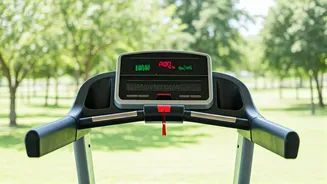Understanding High BP
High blood pressure, also known as hypertension, is a condition where the force of your blood against your artery walls is consistently too high. Over
time, this can lead to serious health issues such as heart disease, stroke, and kidney problems. The good news is that high blood pressure is often manageable. Lifestyle changes, including regular exercise, can significantly improve your blood pressure readings. Understanding the basics of high blood pressure, including its causes, symptoms, and potential complications, is the first step towards managing it. By being aware of your numbers and the factors that influence them, you can take proactive steps to safeguard your heart health. Regular monitoring and a proactive approach, including lifestyle adjustments, are crucial in keeping your blood pressure under control. Consulting with a healthcare provider is essential for personalized advice and treatment plans.
Aerobic Exercise Benefits
Aerobic exercises, often referred to as cardio, are a cornerstone of any blood pressure management plan. Activities like brisk walking, jogging, cycling, and swimming boost your heart rate and improve blood circulation. Engaging in regular aerobic exercise can lead to significant reductions in both systolic and diastolic blood pressure. Aim for at least 150 minutes of moderate-intensity or 75 minutes of vigorous-intensity aerobic exercise per week. Consistency is key, so find activities you enjoy to stay motivated. Even short bursts of exercise throughout the day can be beneficial. Aerobic exercises not only help lower blood pressure but also enhance overall cardiovascular health by strengthening the heart muscle, improving blood vessel function, and aiding in weight management. Remember to consult your doctor before starting any new exercise routine, especially if you have existing health conditions.
Strength Training Impact
Strength training, also known as resistance training, is another effective tool in the fight against high blood pressure. Activities like lifting weights, using resistance bands, or doing bodyweight exercises such as push-ups and squats can positively influence blood pressure levels. Incorporating strength training into your routine helps build muscle mass, which in turn can improve metabolism and reduce blood pressure. Aim to include strength training sessions at least twice a week, focusing on all major muscle groups. Start with lighter weights and gradually increase the resistance as you get stronger. Proper form is crucial to prevent injuries, so consider seeking guidance from a fitness professional. Strength training complements aerobic exercise by improving overall fitness and contributing to a healthier cardiovascular system. Always remember to listen to your body and take rest days when needed to allow for muscle recovery.
Combining Exercises Wisely
For optimal results, combining aerobic and strength training exercises is recommended. A well-rounded exercise plan should include both types of activities to target different aspects of cardiovascular health. Combining exercises provides comprehensive benefits that contribute to lower blood pressure and improved overall health. For example, you might choose to go for a brisk walk on some days and lift weights on others. Alternatively, you could incorporate interval training, which mixes periods of high-intensity exercise with periods of rest or lower-intensity activity. By mixing things up, you keep your workouts interesting and challenging, helping to maintain motivation. Remember, before you begin any exercise program, it's essential to consult with your healthcare provider to ensure it's safe and appropriate for your individual needs.
Lifestyle Adjustments
While exercise is crucial, it's just one piece of the puzzle in managing high blood pressure. Lifestyle adjustments play a significant role in lowering and maintaining healthy blood pressure levels. A heart-healthy diet rich in fruits, vegetables, whole grains, and lean proteins is essential. Limiting sodium intake, avoiding processed foods, and reducing saturated and trans fats can make a big difference. Maintaining a healthy weight through diet and exercise helps reduce the strain on your heart. Quitting smoking and limiting alcohol consumption also benefit blood pressure. Reducing stress through relaxation techniques like yoga or meditation is also important. These lifestyle changes, combined with regular exercise, can provide a comprehensive approach to managing high blood pressure and improving your overall well-being. It's a holistic approach that focuses on multiple facets of health to achieve long-term positive outcomes.
Monitoring and Guidance
Regularly monitoring your blood pressure is essential to track your progress and ensure your efforts are yielding results. Home blood pressure monitors are readily available and easy to use. Keep a log of your readings and share them with your doctor during your check-ups. Seek guidance from your healthcare provider to create a personalized exercise and lifestyle plan that suits your specific needs and health status. They can provide advice on exercise intensity, duration, and other health recommendations. Additionally, consider consulting with a registered dietitian to develop a heart-healthy eating plan. Remember, managing high blood pressure is a continuous process that requires diligence and consistency. With the right approach and support, you can successfully lower your blood pressure and improve your overall quality of life.











